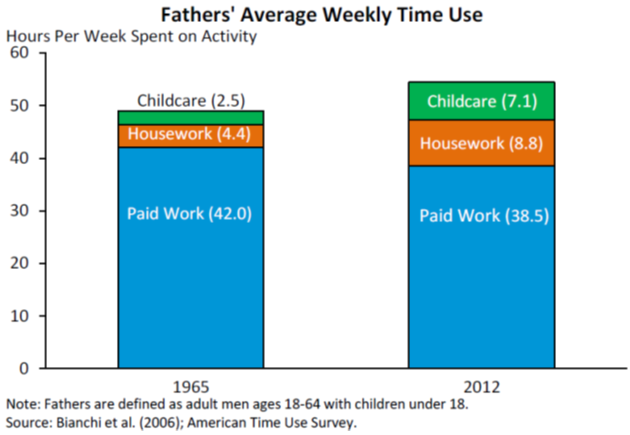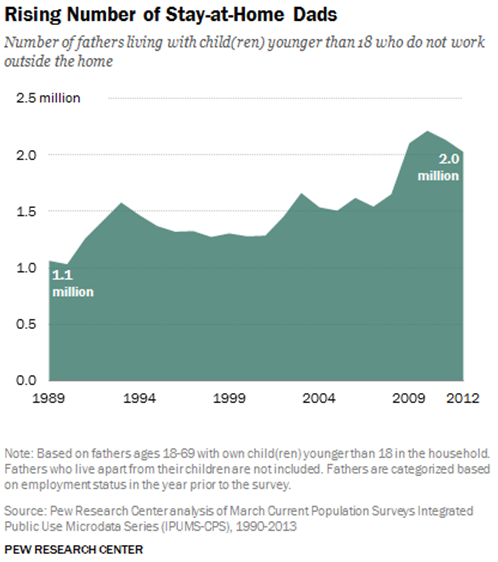First, the good news: Fathers are taking a larger role in their children’s lives, according to recent reports from the White House’s Working Families Summit. The amount of time fathers spend per week on childcare has more than tripled since 1965, according to a factsheet released for the summit:

Moreover, an increasing number of fathers are the primary caregivers for their children. A record number of fathers—2 million—are now stay-at-home dads, and fathers make up 16% of all stay-at-home parents, shows a recent report from Pew:

The sluggish job market is one reason: 23% of stay-at-home fathers say they stay home because they cannot find work. There was a large increase in the number of stay-at-home dads at the height of the economic downturn. But the economic downturn does not fully explain the upturn in stay-at-home fathers – the proportion of stay-at-home fathers reporting that that they are at home specifically to care for their children has quintupled in the last couple of decades, from 4 percent in 1989 to 21 percent in 2012.
But There is a Fathering Gap
Not all fathers have embraced the new hands-on approach to parenting. There remains a class gap in the amount of time spent on childcare by fathers. Analyses by Robert Putnam show that fathers with at least a bachelor’s degree spend significantly more time one developmental child care than fathers with less than a high school degree.
More children are being raised without much involvement from their fathers. In 2012, single mothers headed nearly 25 percent of families, compared to 13 percent in 1970. Some non-resident fathers work hard to maintain a presence in their children’s lives (see “Doing the Best I Can” for examples of this), but most non-resident fathers spend very little time with their children –a recent paper finds that non-resident fathers whose children are being raised by a single mother spend, on average, 12 minutes a day with their child. If the mother is living with a new boyfriend, the non-resident father spends less than half-an-hour a week with their child.
Closing the Fathering Gap to Close Opportunity Gap
There is a long way to go before fathers are doing as much childcare as mothers. But many more now see fathering as a job, not just a label. We know that children with strong parents are more likely to succeed later in life, and that investing in parents is an important step to investing in opportunity. Calls for universal paid family leave are one way to encourage both men and women to take an active role in their child’s life. We also need better research on evidence-based programs that can encourage higher-quality parenting. That means supporting dads as well as moms. Fathers matter for social mobility.



Commentary
The Fathering Gap and Social Mobility
June 27, 2014